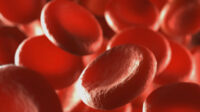Hematology and Oncology are two specialties from the American Board of Internal Medicine physicians can pursue as a combined discipline. In many cases, hematologists also train in oncology so they can treat a range of blood-related conditions, including some cancers. At of 2024, there are approximately 8,915 physicians who hold valid certifications in both Hematology and Oncology. How can you become certified in both Hematology and Medical Oncology? Here’s a look at some of the requirements for those seeking dual certification.
What requirements are there to become dual certified in Hematology and Oncology?
To become obtain dual certification in the subspecialties of Hematology and Medical Oncology, you must be:
(1) Already board certified in internal medicine and
(2) Have completed three years of a graduate medical education fellowship training. This training must include:
- a minimum of 18 months of full-time clinical training
- At least 12 of these months must be in the diagnosis and management of a broad spectrum of neoplastic diseases.
- 6 months in the diagnosis and management of a broad spectrum of non-neoplastic hematological disorders.
(3) Demonstrate clinical competence, procedural skills, and moral and ethical behavior in the clinical setting
(4) Hold a valid license to practice medicine
(5) Pass both the Hematology and Medical Oncology Certification Exams
What topics are tested on the Hematology and Oncology Board Exams?
According to the ABIM Medical Oncology Certification exam blueprint, the test covers the following topics:
- Hematologic Neoplasms 14%
- Thoracic Cancer 11%
- Breast Cancer 13%
- Genitourinary Cancer 12%
- Gynecologic Cancer 4%
- Gastrointestinal Cancer 13.5%
- Skin Cancer, Sarcomas, and Unknown Primary Site 6%
- Anticancer Therapeutics, Clinical Research Methodology, and Ethics 9.5%
- Palliative Care, Survivorship, and Communication 11%
- Head, Neck, Thyroid, and Central Nervous System Malignancies 4%
- Genetics, Genomics, and Tumor Biology 2%
According to the ABIM Hematology Certification exam blueprint, the test covers the following topics:
- Hematopoietic System 25%
- Coagulation 27%
- Hematologic Neoplastic Disorders 35%
- Transfusion Medicine 5%
- Hematopoietic Cell Transplantation (HCT) 8%
How are the Hematology and Medical Oncology Board Exams graded?
The Hematology exam contains up to 240 single-best-answer multiple-choice questions. Approximately 40 of these questions do not count in the examinee’s final score.
The Medical Oncology exam consists of up to 240 single-best-answer multiple-choice questions. Approximately 40 of these questions do not count in the examinee’s final score. A small number of multiple-choice questions may be multiple-response questions, where the examinee will have to select the two or three correct options.
How can I prepare for the ABIM Hematology and Medical Oncology exams?
According to the ABIM, the 2023 pass rates for the Hematology and Medical Oncology board exams were 92% and 92%, respectively. How can you best prepare for these tests?
Practice makes perfect when it comes to board review. By answering practice questions, you will be able to identify weak points and areas to focus on during your studies.
What Key Dates are there for Hematology and Oncology Certification?
You must declare your intention to pursue dual board certification in Hematology and Medical Oncology by about January 1 of your first year of fellowship. To be admitted to either examination, candidates must have completed the required training in the subspecialty, including vacation time, by October 31 of the year of examination. Find the examination deadlines and dates on the ABIM website.
The BoardVitals Hematology and Oncology Question Bank contains more than 600 Hematology and Oncology board review practice questions with detailed explanations for both correct and incorrect responses. All questions follow the ABIM examination content found on the ABIM Hematology and Medical Oncology board exams. Sign up for a free trial today!




